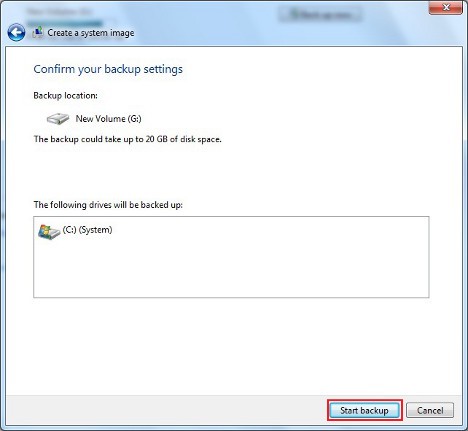
#Windows backup image how to#
How to Backup Personal Files with SyncBack Free.How to Backup and Restore your Personal Files with Windows Backup.If you want to always have a recent copy of your personal files to avoid data loss, then read the following tutorials: In fact, System Image Backups are an exact copy of the state of Windows Settings, Programs and Personal files at the time when you backed up the system image. On the other hand, if you recover your system from a system image backup (aka "System Image Recovery"), it means that you 'll be fully restoring your system as it was at the date when the image was created and all your personal files which were created after the date of system image creation will be lost. Keep in mind that, System Image backups are different than System Restore points, because rolling back your system to a previous state (using System Restore), means that you are partially restoring it to a time that it worked normally and without affecting your personal files. System Image backups, are very useful, because you can easily restore your system to a previously 100% working state (with all customizations and installed programs), especially if Windows fails to boot or if you cannot regain your system's functionality after reverting to a previous System Restore point. In fact, if you have a system image backup you can restore your system exactly as it was when you performed the backup.
#Windows backup image windows 10#
To download Windows 10 installation media, see Recovery options in Windows.A System Image backup is an exact copy of your hard drive, which contains all the required Windows settings, programs and personal files, in order to restore you PC and all files after a disaster. It doesn't contain your personal files, settings, or programs. It's a good idea to Backup and Restore in Windows frequently because the recovery drive isn't a system image. If you ever need to use the recovery drive to reinstall Windows 10 on your PC, see Recovery options in Windows for further instructions.
#Windows backup image password#
You might be asked to enter an admin password or confirm your choice. In the search box next to the Start button, search for Create a recovery drive and then select it. To create a recovery drive in Windows 10: To download Windows 11 installation media, see Recovery options in Windows. Need more options for creating a recovery drive?įor Windows 7, see Create a system repair disc.įor Windows 8.1, see Create a USB recovery drive. If you ever need to use the recovery drive to reinstall Windows 11 on your PC, see Recovery options in Windows for further instructions. Many files need to be copied to the recovery drive, so this might take a while. When the tool opens, make sure Back up system files to the recovery drive is selected and then select Next.Ĭonnect a USB drive to your PC, select it, and then select Next.

In the search box on the taskbar, search for Create a recovery drive and then select it.

To create a recovery drive in Windows 11:

Warning: Use an empty USB drive because this process will erase any data that's already stored on the drive.


 0 kommentar(er)
0 kommentar(er)
